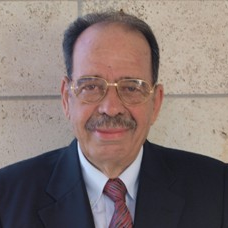Small Scale and Decentralized Wastewater Treatment and Reuse within the Concept of Circular Economy
A special issue of Water (ISSN 2073-4441). This special issue belongs to the section "Wastewater Treatment and Reuse".
Deadline for manuscript submissions: closed (30 June 2018) | Viewed by 47919
Special Issue Editors
Interests: wastewater treatment; biological nutrient removal; activated sludge; membrane bioreactors; industrial wastewater; nature-based solutions
Special Issues, Collections and Topics in MDPI journals
Interests: Resource Recovery; Data analytics, knowledge discovery and process modelling; Circularity Modelling and Assessment
Interests: water distribution systems; flexible design; deep uncertainty issues in decision making; static robust optimization; dynamic robust optimization; multi and many objective methods; multi-criteria decision analysis
Special Issues, Collections and Topics in MDPI journals
Interests: aeration; oxygen transfer; wastewater; activated sludge; stormwater; antibiotic resistance; water reclamation
2. Union of Hellenic Water Supply and Sewerage Operators, 41222 Larissa, Greece
Interests: wastewater treatment and water reuse; small and decentralized wastewater management systems; water technologies in ancient civilizations
Special Issues, Collections and Topics in MDPI journals
Special Issue Information
Dear Colleagues,
Our goal is to plan a Special Issue on “Small Scale and Decentralized Wastewater Treatment and Reuse within the Concept of a Circular Economy” to be published in Water. The manuscripts, which will be selected for publication, will demonstrate the state-of-the-art in wastewater treatment technologies, including various aspects related to wastewater treatment technologies, water reuse suitable for small scale and decentralized systems, recharge of wastewater to the underground and how these affect the circular economy concept. It will also include innovative onsite treatment and reuse systems, where the circular economy approach is shown at a household level.
Dr. Simos Malamis
Dr. Evina Katsou
Dr. Alper Baba
Dr. Maria da Conceição Cunha
Dr. Priyanie Amerasinghe
Dr. Michael Stenstrom
Dr. Andreas N. Angelakis
Guest Editors
Keywords
- History of small-scale waste- and storm-waters management systems including effluent disposal.
- History of water reuse
- Evolution of waste- and storm-waters treatment and reuse.
- Waste- and storm-waters treatment technologies with emphasis on small scale and decentralized systems.
- Geothermal wastewater and its effects on the environment.
- Urban waste- and storm-waters management.
- On-site and decentralized waste- and storm-waters treatment systems.
- Removal of trace organics and emerging contaminants.
- Membrane and disinfection technologies.
- Potential effluent uses (e. g., irrigation, industry, recreation, groundwater recharge, and (in)direct potable).
- Water reuse planning, policy, monitoring requirements, and standards/criteria.
- The role of water reuse for integrated water resources management.
- Waste- and storm-waters treatment and reuse in future cites
- Sewage biosolids management
- Economic and social aspects of production and use of recycled water.
- Health and ecological risk analysis in water recycling applications.
- Resource recovery from sewage on a small scale










